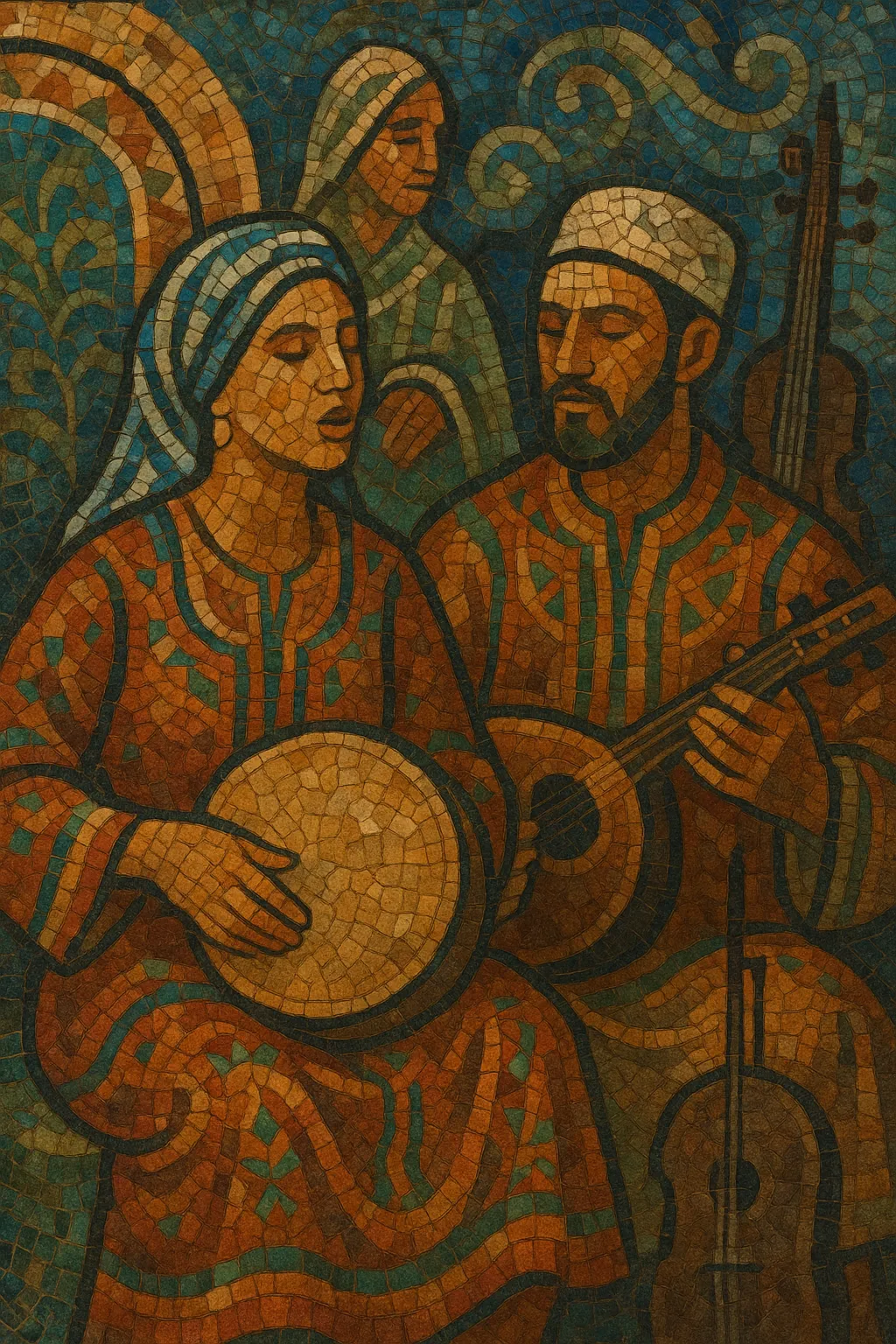Izlan is the Amazigh (Berber) song-poetry tradition of Morocco’s Middle Atlas, where the word “izlan” in Tamazight literally means “songs/poems.” It blends highly crafted, metaphor-rich verses with strophic melodies, delivered in call-and-response between a lead singer and a small chorus or duet.
Musically, izlan is marked by lilting 6/8 and 2/4 grooves, modal melodies with subtle microtonal inflections, and a compact acoustic ensemble centered on the lotar (a plucked lute), bendir (frame drum), violin (kamanja), and sometimes rebab. Performances are intimate yet communal—sung at weddings, local festivities, and cultural gatherings—and often revolve around themes of love, nostalgia, nature, exile, and community life.
Although deeply rooted in oral tradition, izlan evolved through radio and the cassette era into a modern popular folk form, retaining its poetic core while adopting contemporary arrangements and studio production.
Izlan traces its roots to Amazigh oral poetry and communal song in Morocco’s Middle Atlas. The form crystallized around antiphonal vocal exchange and sung verse—vehicles for love poetry, social wisdom, and local history.
With the spread of urban markets and regional performance circuits, izlan moved from purely local gatherings to cafes, inns, and town festivities. Radio broadcasting in the mid-20th century began capturing and circulating Middle Atlas repertoires, giving izlan its first broad audiences beyond village contexts.
Affordable cassette production and distribution transformed izlan into a modern popular style. Artists refined ensembles around lotar, bendir, violin, and supporting vocals; the poetry remained central, but arrangements became tighter, tempos more consistent, and songs increasingly structured for repeat listening. Major singers emerged as regional and national icons.
Festival circuits, television, and digital platforms widened izlan’s reach. Younger performers adopted studio polish while retaining the poetic strophic core, sometimes fusing elements of chaâbi-pop production or adding bass and keyboards. Today, izlan is recognized as a cornerstone of Amazigh musical identity, bridging tradition and contemporary Moroccan popular culture.
Language and lyrics: Write in Tamazight (Middle Atlas dialect). Use compact, metaphor-rich couplets centered on love, longing, nature, and communal values. Keep strophic structures with refrain-like lines to anchor memory and participation.
•Melody and mode: Compose modal melodies with narrow to moderate range, favoring stepwise motion and ornamental turns. Include subtle microtonal inflections where natural to the singer.
•Rhythm and groove: Use flowing 6/8 or steady 2/4 pulses. Frame-drum patterns (bendir) should interlock with vocal phrasing; avoid excessive syncopation that obscures the text.
•Texture and form: Structure songs in verses with recurring melodic cells. Employ call-and-response between a lead voice and a small chorus or duet; alternate solo lines with choral affirmations.


